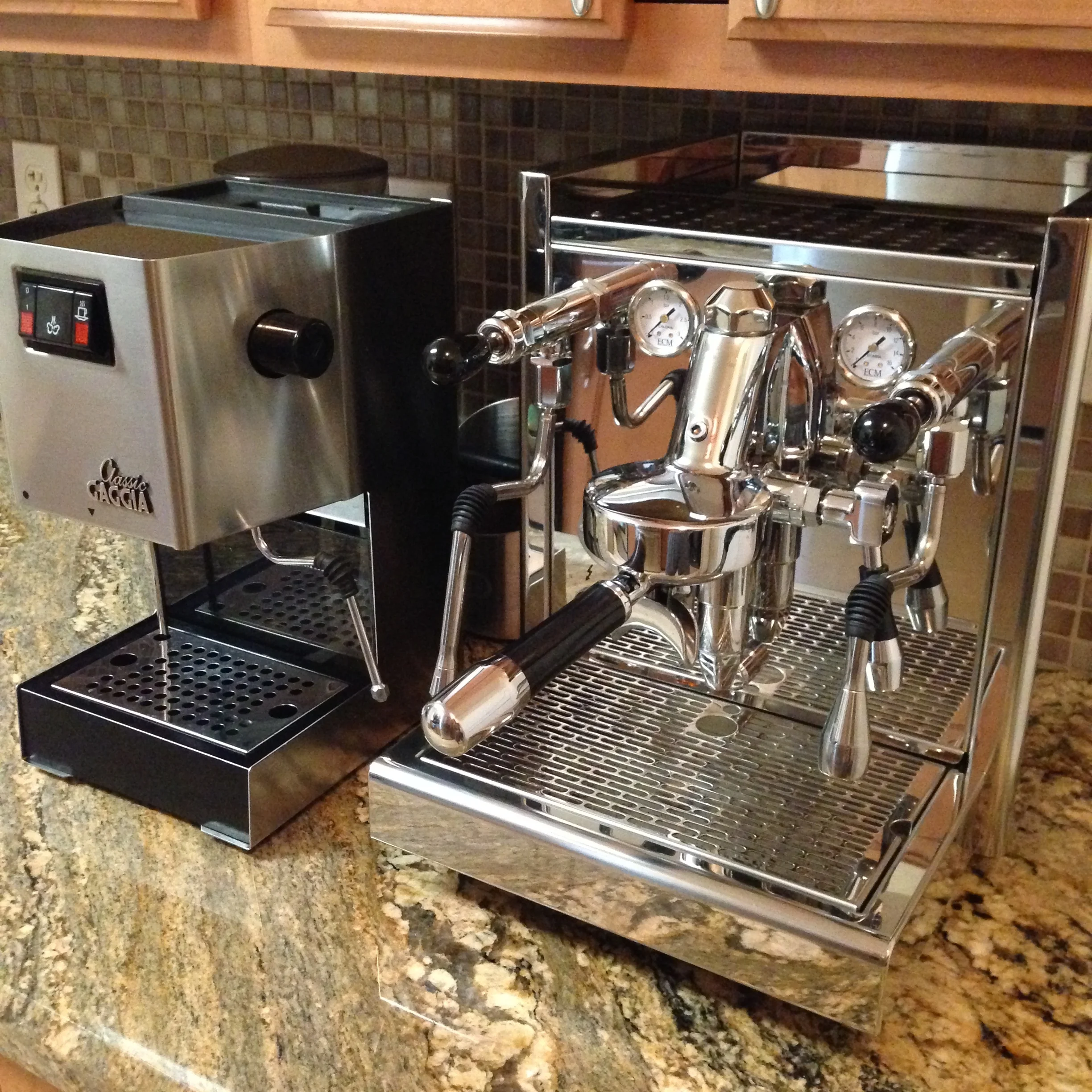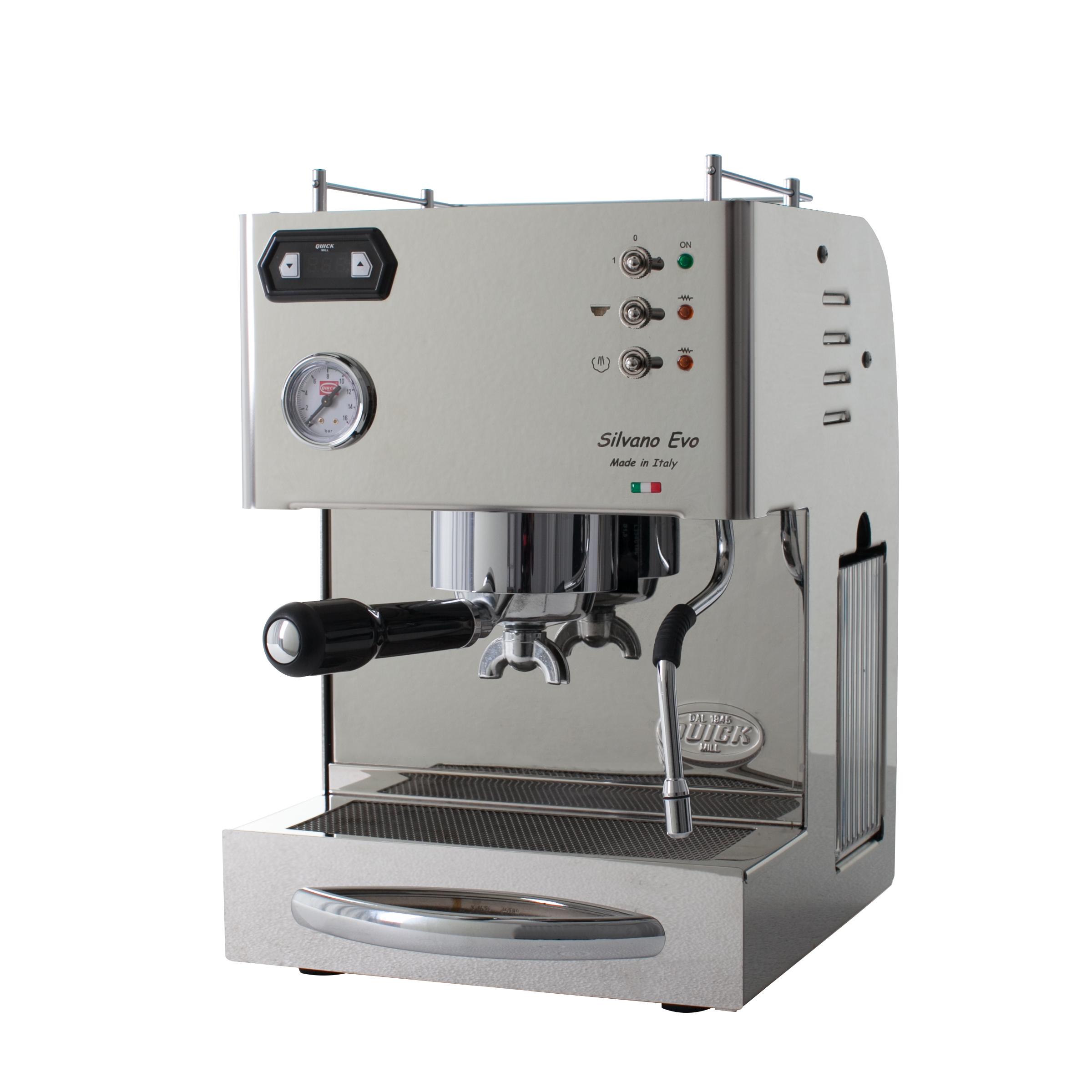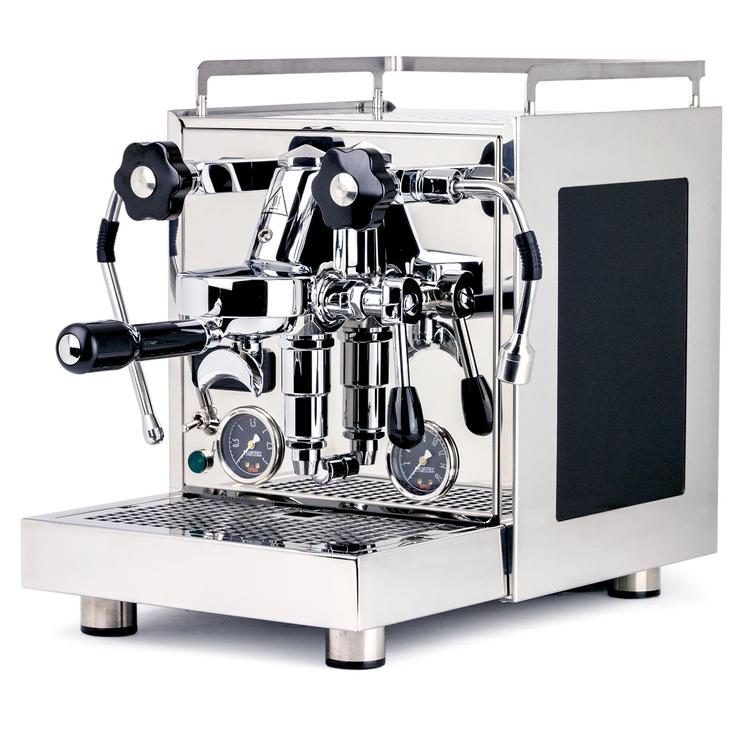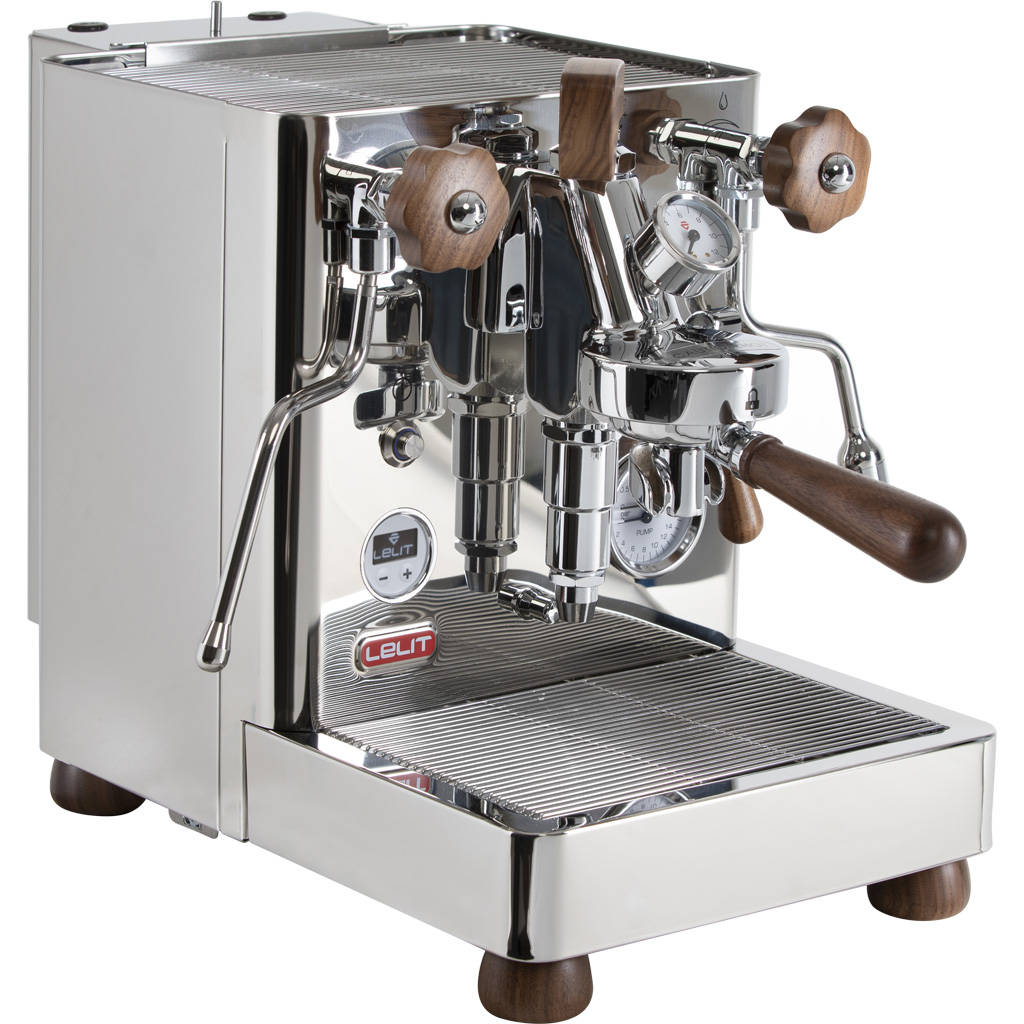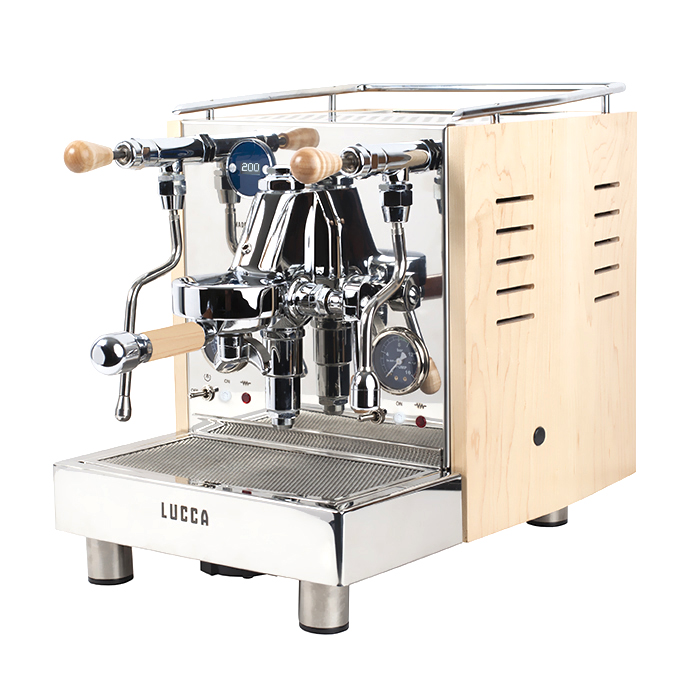The non-exhaustive list of home espresso machines I would consider at various price points and why
Purchasing an espresso machine is a big move. There are a lot of options, and in many cases you may not be able to see or use the machine in person before purchasing. Determining which espresso machine is right for you usually involves more questions and discussion about your goals, your space, preferences, etc., and I'm happy to help you through that process, simply contact me. However, in this post I'm not going to cover what may be right for you, but the machines I would take a close look at or prefer at various price points and why. There are certainly exceptions to this post, especially when it comes to the under $1200 category with used equipment and a few machines that can make good espresso with modifications, but I'm going to keep it to retail purchases, to keep it consistent.
Machines Under $1200
Crossland CC1 V2 - $699
Bill Crossland was an engineer at a major commercial espresso machine manufacturer and has a lot of machine know-how that he packed into this home sized unit. This is a single boiler “hybrid” machine, in that instead of one boiler with two thermostats for dual uses, brewing and steaming, it has a separate thermoblock used for steaming. This will provide fast, drier steam than a SBDU (single boiler dual use) machine, although its steaming capabilities will still fall a little short of an HX or true dual boiler. The brew boiler is PID temperature controlled, to obtain temperature accuracy and consistency, two things that really plaque traditional single boiler units. The machine also has a traditional, commercial sized 58mm portafilter and programmable pre-infusion. What’s the downfall? While, it’s not a bad looking machine, it’s not exactly striking either.
Pros: Commercial 58mm group, PID controlled temperature, programmable pre-infusion, built in shot timer.
Cons: Thermoblocks and digital displays will often times be the first components to have issues, however, these machines do have a solid reputation. It also may not be up to the aesthetics you want in your kitchen, as it's (literally) not as polished as many machines.
Bottom line: About the least expensive, commercial group machine that doesn't need modifications right out of the box.
Very similar to the CC1 in design and features, in an arguably more stout and attractive, polished steel box. The fit and finish is very nice on the Silvano, and it has a great counter presence. It still has the PID, but does not have preinfusion, but does pretty much everything else the same as the CC1, so I won’t repeat myself. The toggle switch for the steam can potentially be a bit tricky as you cannot slowly open the steam valve up, it’s simply off or on.
Pros: Attractive, commercial group, PID display with shot timer, Quickmill reputation, built in brew pressure gauge, slightly more steaming power than the CC1.
Cons: Not many really other than the price, which is getting up there and you might consider making the leap to the next price bracket. The machine looks great, has solid build quality, and makes great drinks.
Bottom line: A great machine with about all you could want short of getting into the HX machines. Will arguably last longer than the Breville Dual Boiler. It's not a bad spend of $1k by any means.
Machines Under $2,000
Arguably the most difficult category, as there are just a LOT of machines in this price range. Many are very similar heat exchanger options, but I will try and pull out a few that stand out from the rest.
Nuova Simonelli Oscar II - $1295
The original Oscar used to be one of the serious jumping off points in the home espresso world. It is now back with a major refresh while retaining so much of what made the original Oscar great; straightforward reliable performance at an accessible price. Like the original Oscar, the Oscar II is slightly less conventional in appearance, but that may be refreshing to many in the sea of polished steel boxes. It features at heavy duty Sirai pressure stat, large water reservoir, and heat exchanger group. The entire machine is very streamlined and extremely clean in appearance.
Pros: Full size machine, 58mm group with Nuova Simonelli’s “patented ‘mechanical preinfusion system’”, reliable and straight forward HX machine for easy serviceability and reliability. Extremely clean and streamlined modern appearance.
Cons: Looks are a bit a non-conventional with some plastic molding on the back and base, no hot water tap (though this is really not an issue to me).
Bottom line: The Oscar II is a well made, straight forward HX machine plenty of capable of making excellent espresso in a forward thinking package from a reputable manufacturer.
A tried and tested, robust and reliable jumping off point to the very saturated E-61 market, the Anita Evo is a great long-time go-to that has been updated over the years. Functionally, there is more similar than different in the shiny metal box with E-61 group or the like in this price category, so going with something that is reliable, repairable, well supported, and well configured can be what really sets a machine apart in this category, and the Anita Evo does just that. A true 58mm commercial E-61 group, heat exchanger with Ulka 52W vibratory pump, no-burn steam and hot water wands, and easily accessible adjustments prove this one has really been thought through and improved over the years to be a solid choice.
Pros: Great reliability, accessibility, and well appointed at this price point. The commercial style portafilters and non-compression steam and hot water valves provide great longevity, low water sensor that does not kill power to the pump to allow you to finish a shot is really nice.
Cons: At this price point, none, really. With the exception of the Profitec Pro 300 listed next, most machines in this price range will be E61 or similar heat exchangers with vibratory pumps, and this is a good one.
Bottom Line: As stated, in this category, this one is a pretty safe bet. It’s reliable, easily serviced and repaired, and offers many commercial style upgrades typically found on much more expensive machines.
The Profitec Pro 300 is very quickly gaining a lot of admiration and respect in the home-barista community, and for good reason, this dual-boiler machine packs a lot of punch in a very compact package. Profitec is the sister company to ECM, so you know the build quality and attention to detail are present. That said, this machine is all about features. Two PID controlled, insulated boilers, with a steam boiler than can be independently switched on or off, no burn steam and hot water wands, extremely quick warmup time, 3L water reservoir, and built in shot timer, all in a polished steel shell that can fit in even the tightest of kitchens. The machine is actually 5" narrower than the Breville Dual Boiler, and is user serviceable and long lasting. It is jam packed with just about every feature you could want in the home at a price only the Lelit Diana is competing with. Ben Piff, from Clive Coffee, did a nice overview of the machine, here.
Pros: Packed full of features, dual boiler, high build quality, PID with shot timer, compact design, sure to satisfy any home barista needs.
Con's: No preinfusion, noisier vibration pump is a concern to some, and the space saving design can make moving about the machine a bit cramped. The water reservoir, while large, can only be refilled from the top, which some don't like if they have tight overhead cabinets. Although the build quality is there, some may argue the design leaves some to be desired, but this is likely a result of function over form, as you have to fit all of those features in small footprint somehow.
Bottom Line: A really great, long-term alternative to the feature packed Breville Dual Boiler, (which is not on the list because it is not user serviceable), with a very quick heat up time and a lot of features for the price and size.
The Andreja is a veteran to the home espresso game and for good reason. The machine packs a lot of commercial grade features and components into a switchable (can be used via water reservoir or direct water connection) HX machine. Drain-able boiler, low water sensor with audible alert will continue to operate the pump so it doesn't cut you off mid shot (this is a really nice feature), commercial quality, non-compression steam and hot water valves, Sirai pressurestat, the list goes on. The design has been well refined over the years for continuous improvements (hence the "evo") and is sure to keep any barista satisfied for years.
Pros: Commercial build quality and components, switchable water supply, hinged water reservoir cover (so you don't have to remove the whole lid and cups), insulated boiler and vibratory pump, two complete portafilters, and proven reliability.
Cons: Some would prefer a rotary pump, but that would increase the cost, joystick steam and hot water valves cost extra.
Bottom Line: I struggled to come up with many cons because this machine is rock solid with a proven pedigree.
Another long timer with a hard earned reputation, the Mini Vivaldi II provides a great alternative to the polished steel boxes of nearly every other machine. Dual boiler machine with a TON of steaming power, easy to use, front loading water tank, and one of the most quiet vibe pumps around. This La Spaziale machines are also a little different in that they feature programmable volumetric dosing, meaning you can program how much water you want to run through a given shot, so once you have your dose and grind dialed in, you can just hit the button and walk away, or fill your milk pitcher, or steam the milk, the world is full of possibilities, really. Most retailers are also offering wood panels for the machine that look amazing as well. The one quirk to the machine is that the portafilters are 53mm, instead of the commercial standard 58mm. This really isn't too big of an issue, as the machine is well supported, and there are plenty of vendors offering baskets and tampers to fit, but it is a bit different and parts may not be quite as common.
Pros: Dual boiler machine with quiet vibratory pump, compact design, best in class steaming power, volumetric dosing control.
Cons: Water supply is not switchable - you either have to order it as a tank or plumbed model, the plastic panels can be very polarizing (though I would say they look much better in person, and the machines are really sexy with the wood panels), 53mm portafilters mean not as many choices for accessories.
Bottom Line: This is a fantastic and well proven machine that would make a great fit for those that: want to automate their coffee somewhat via the volumetric dosing, make a lot of milk drinks and/or entertain and would benefit from the steam power, don't like the shiny metal box look, are limited on space and need a front loading water reservoir.
There are a host of quality E-61 HX's at this price point, but I'm going to call this one out for it's build quality and attention to detail. The machine has all of the same functionality of the much more expensive ECM Technika IV Profi, with rotary pump and switchable tank/plumbed water supply, but with a few less bells and whistles to bring the price down. It still uses a name brand and high-quality pressurestat and controller, but doesn't have a few features like the joystick steam and hot water valves. One of the biggest differences with this machine compared to it's peers is the stainless steel boiler. It's debatable how much difference this makes, and it will depend greatly on the water being used, but more and more people prefer this material to potential leeching concerns of brass or copper.
Pros: Full commercial size E-61 group, high quality fit and finish, stainless steel boiler, single and double spout portafilters, cup rail can be removed to reduce height, Gicar controller, and Sirai pressurestat.
Cons: Have to lift entire lid off the machine to refill the water reservoir.
Bottom line: As 1st-Line states, ECM makes very high quality machines that don't cut corners. This a great option in this price point for a solid, well built E-61 group heat exchanger.
Machines Under $3000
The next two machines on the list are actually ones we have covered before. In the low $2000's you have the cousins of the Vivialdi II/Mini Vivaldi II, the Dream, and the Lucca A53, which are all very close in features I covered in Brandon's case study. And at $2199, is the ECM Techinka IV Profi, my personal machine, discussed here. If you have questions about either of those machines, I have used and enjoyed, don't hesitate to contact me. In the meantime, we will keep moving up the bank account.
Profitec Pro 600 - $2299
This one has a bit of an overlap with the previous machine, but its differences may prove to be a selling point for some. Profitec is a sister company to ECM, built on a strong reputation established by the larger Dual Boiler Pro 700. The Pro 600 delivers that same dual boiler performance in a slightly smaller package and at a lower price point, thanks to the vibratory pump and tank only water supply. Like most E-61 grouphead machines, there’s more in common than difference, but the aesthetics and footprint might offer a nice alternative to some of the other options listed.
Pros: Compact footprint, Stainless steel boilers, PID control with integrated shot timer, reliable Profitec quality and construction.
Cons: At this point, many machines have a vibratory pump (though this one is described as being very quiet), water tank is accessed by removing entire top of machine. This can actually be an advantage so you can keep the cups on, but is more cumbersome than just lifting a lid.
Bottom Line: If you’re tight on space and want a dual boiler machine, and don’t need to plump in the water supply, or prefer it’s looks, it should be a solid option.
The Duetto is another one of those proven work horses that has only gotten better with age. Dual boilers, dual PID controllers, huge drip tray, attractive design, high quality finishing, quiet and reliable rotary pump, and switchable water connection. The Duetto has recently been decked out with a very visible and easily readable digital touch display and top mounted gauges. Four different steam tips, steel tamper, no burn steam and hot water wands, the machine is a beast in its class.
Pros: Boilers can be independently turned on/off, dual PID control, solid construction, reliable build, switchable water connection, quiet rotary pump.
Cons: Shot drop distance (height between drip tray and group head) is a little shorter than some, making some cups a tough fit, especially with spouted portafilters, no shot timer, as many others in this class have, have to remove entire lid to access water reservoir.
Bottom Line: One of the least expensive switchable dual boiler machines, with proven reliability, what's not to like?
This machine combines the basic functions and features of the Vetrano 2B Evo and Alex Duetto 3.0 and takes them up a notch courtesy of Profitec's attention to detail and fit and finish. Though the Vetrano 2B has gained quite a bit of refinement over the years, this machine is super clean and finished. Functionality and specs are nearly the same as the Vetrano 2B, and that's a good thing.
Pros: Very high quality fit, finish, and internal layout, very attractive and classic looking machine with switchable water connection, two stainless steel insulated boilers, rotary pump, PID display with shot timer, non-compression steam and hot water valves.
Cons: Not really any obvious draw backs. The non-compression rotary knobs are a plus to some that don’t like joysticks, and the price is now in line with many direct competitors. The newcomer Lelit Bianca at a slightly higher price does present more features for similar money.
Bottom Line: You can't really go wrong with any of these machines. At a few hundred more, it's really a matter of boiler material preference and aesthetics, which are absolutely important.
New on the scene, the Bianca is potential game changer, particularly at this price point. It seems that someone has actually been listening to all of the home user’s feedback and tried to incorporate it into this machine. It’s real draw is the wooden paddle mounted on the top of the venerable E-61 brew group that allows the user to manually control brew pressure in real time. The group mounted gauge displays actual pressure at the puck allowing users pressure profile extractions like lever machines and pump driven machines costing multiples more. To be more specific, the paddle is controlling water flow, in a more similar principle to Slayer espresso machines, and this can then be manipulated further, or set to easily duplicate by programming preinfusion and profiles. The machine is pretty tricked out, and will be very interesting to see more feedback as more user’s get their hands on it. The water tank is also side inserted, from either side! This may sound trivial, but to the home user, where the machine is often located under cabinets, this can be a real game changer in convenience. The machine can be directly plumbed as well, and comes with a nice host of accessories, including a bottomless portafilter.
Pros: Besides a true lever machine, no other machine can pressure profile and manipulate extractions like the Bianca, at this price point. The side loading water reservoir is very slick and convenient, and the ability to pre-program settings or just use it like a typical E61 group when the user may not want the full manual control is also quite nice.
Cons: All of the extra tech, particularly the wooden paddle does leave the machine looking a bit busy. This could just be because we’re used to looking at the big metal box with E-61 nose hanging off it all these years; it will be very interesting to see this in person, to judge if it is cramped in appearance or usage.
Bottom Line: This machine might be a real game changer at this price point with these capabilities and technology. This may offer all of the functionality of a Slayer Single Group at less than a third of the price.
Taking it a step further than the Profitec Pro 700, Clive Coffee worked directly with Quickmill to basically trick out their dream machine. There's really not much more you could possible want, this thing is fully loaded. Similar specs and design as the other switchable dual boilers just covered, the Lucca M58 ups the ante by adding one of the cleanest PID / shot timer displays, counter blanced portafilters (akin to those on the ECM Techinka IV Profi), joystick steam and hot water valves, super clean blue-inlay gauges, and the ability to add custom wood accents to the side panels, levers, and portafilter handles.
Pros: Absolutely tricked out, tons of attention to detail, refinement, and little fit and finish tweaks to make this beautiful machine subtly stand out.
Cons: All that beauty ain't cheap.
Bottom Line: Aesthetics and absolutely every option you could want are the name of the game on this one. If I were in the market, this would be one of my top choices because it's so beautiful and really has everything, but it's a pricey acquisition. I will say, espresso machines take up a lot of space and are a very visual element to any home, so aesthetics are important, and you really want to be happy looking at it everyday.
Over $3000
La Marzocco Linea Mini - $4900
Have you ever dreamed of having classic Italian commercial machine quality and design aesthetics in your home? Well, the Linea Mini is just that, a miniature version of their commercial classic, the Linea. The performance and quality, however, are not so mini. This dual boiler machine is lives up to the La Marzocco name in quality, craftsmanship, and ability to pull fantastic shots. This machine is a no-frills, everything you need and nothing you don't type. No shot timer, no digital PID display, no programmable anything; simply a paddle switch for brew activation, a scroll wheel discretely tucked on the side of the machine for temperature adjustment, and built in automatic pre-infusion. Many argue that it almost gets out of the way of the barista, and allows you to concentrate on other variable and appreciate the purity of the process. The machine shares many of the same components as their commercial units, and is intended for front loading reservoir use, but a plumb in kit is available.
Pros: Straight up sexy, classic Italian and La Marzocco design, awesome steaming power, pulls fantastic shots with great body and balance, easy to use, friendly footprint, La Marzocco quality and reliability.
Cons: You're arguable paying a lot more for less features, though you are getting commercial build quality. Machines costing the same or slightly less have pressure profiling and programmable shot profiles - this machine caters to the less is more crowd, no shot counter, no digital display.
Bottom Line: At least to me, this machine is fantastic looking, and it's very pure and gets out of the way of the barista. Many that have very high end home equipment pedigrees and professional baristas say that is simply pulls great shots, shot after shot.
The GS3 is a bit of a legend, in that it’s unique good looks and unquestioned performance bring what is essentially a full commercial single group into the home. Before La Marzocco had their “Home” division, they only sold commercial machines, the GS3 being a popular choice among home users with the means, catering and mobile setups, and test and training labs. Available as an auto-volumetric machine or a semi-automatic manual paddle with the ability to pressure profile on the fly. Today, it’s wildly customize-able and still just as cool.
Pros: Solid La Marzocco build quality and performance, plenty of custom panels and accessories available, switchable connection, can run on 15a/110v (though I will have to do some more digging if that trades off boiler performance).
Cons: Still very expensive, and parts tend to be slightly more expensive than the more universal E-61 like components. Pressure profiling can be a bit touchy if you’re really targeting specific pressures.
Bottom Line: I personally love the uniquely classic but entirely modern appearance of the machine, La Marzocco machines are nearly ubiquitous for a reason, and the GS3 performs. I also tend to feel that saturated groups, particularly those from La Marzocco machines, create a mouthfeel and texture of shot that is uniquely wonderful.
As stated above, the GS3 was the go-to, end game, grail home espresso machine for most, until the Slayer Single Group arrived on the scene. Whether that is still the case is hotly debated, I would say they exist in the same market, today. The Slayer offers a bit more in sex appear, customization, and wow-factor, at a slightly higher price point. It also approaches extraction in a different manner, by controlling water flow with their trademark needle valve, to produce extremely long and gentle pre-infusion, which they call “pre-brew”, to allow the user to grind finer and extract more from the coffee. The Slayer’s are certainly great to look and a lot of fun to use.
Pros: Sexy as hell, flow control, built in display to show pre-brew and full brewing times, trick steam and hot water valves, and shot mirror integrated into the drip tray. The machine can be specified with 110V/15a or 220V/10a offering greater flexiblity.
Cons: Due to Slayer’s being less common, there can be a concern for support and service, depending on your location. Direct plumb water supply only, and is still pretty large.
Bottom Line: At this level, these machines produce fantastic espresso and are beautiful to look at. The Slayer definitely has a bit more appeal and a more exotic wow-factor associated, though this comes with a price tag. The flow control and additional shot profiles the Slayer is capable of can be a game-changer or deciding factor for some.
The Bottom Line:
There are a lot of great home espresso machines on the market from some great vendors like Clive Coffee, Chris Coffee, 1st-Line Equipment, Seattle Coffee Gear, and La Marzocco Home, to name a few. As stated here, you should always call the retailer(s) that have the machine(s) you're interested in for ordering. I hope I didn't offend anyone that has purchased a machine not on the list, because there are certainly many other good ones not mentioned. That is particularly true in the $1500-$2000 range where there are a whole slew of great E61 HX's from a variety of manufacturers, I simply didn't include them all because they come down to more aesthetics and minor personal preferences than anything.
I'm the type that likes to gather as much information and as many perspectives and points of view on the pros and cons of something before making a decision, so I hope this will prove helpful to some when shopping for a new home espresso machine. If you have further questions specific to your situation, or need help selecting a machine of your own, don't hesitate to contact me.
